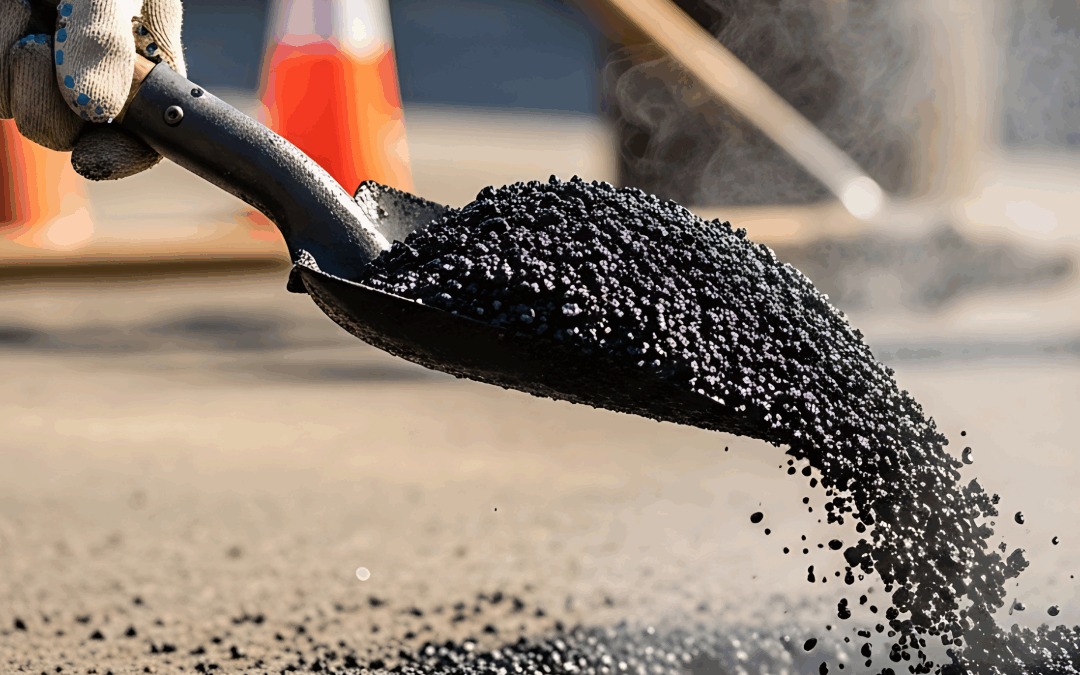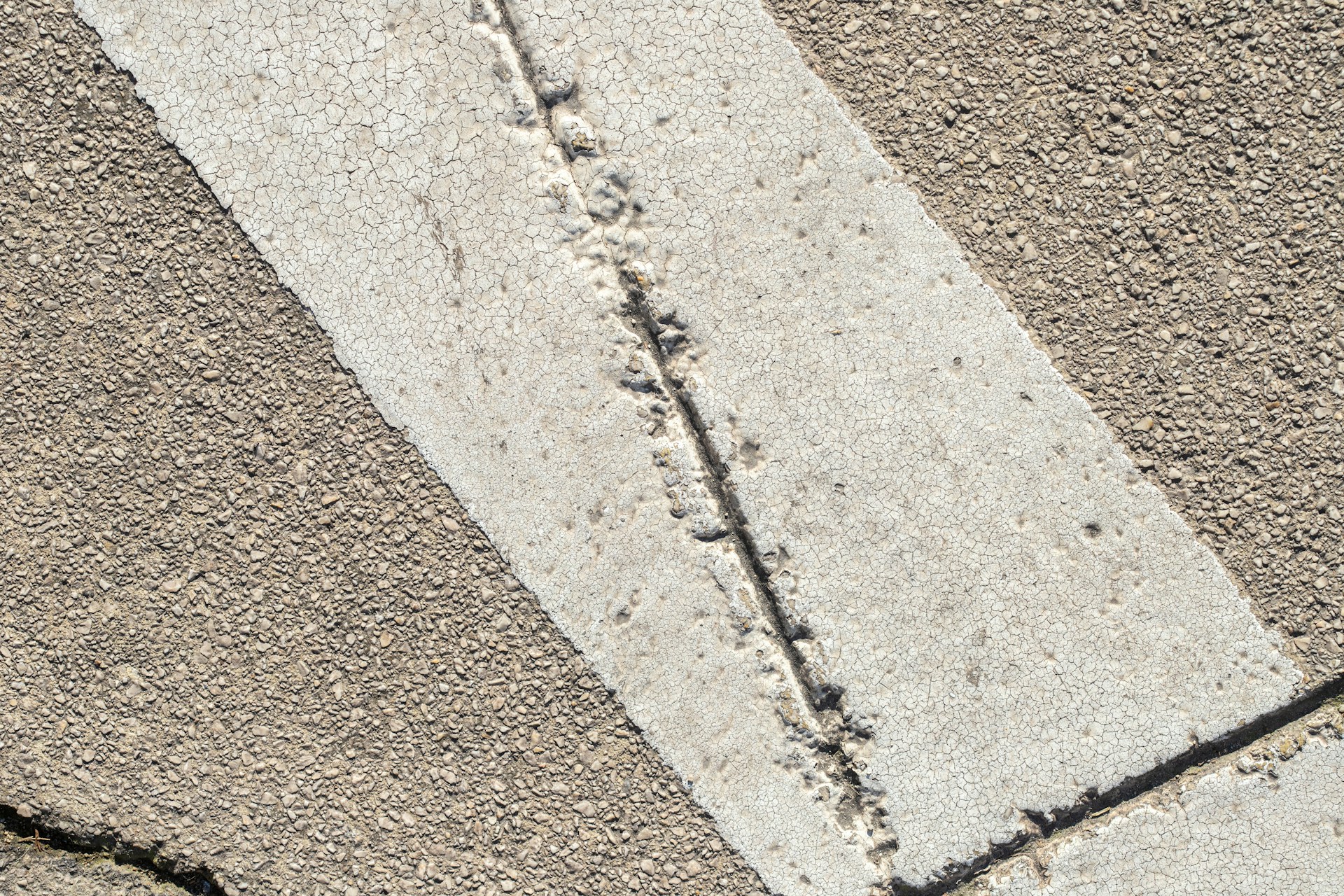Pavement damage is one of those things that sneaks up until it’s too late. A small crack one month can turn into a jagged eyesore the next. Left alone, these imperfections grow and turn into potholes that make driving, parking, or even walking more frustrating and less safe. They don’t just make a space look worn out. They also increase the chances of injury or property damage.
Dealing with these problems early keeps roadways and surfaces working the way they should. Regular maintenance helps prevent bigger issues, limits repair costs, and helps your pavement last longer. Fall is a smart time to handle repairs before colder weather moves in, because small cracks can quickly expand when temps start dipping.
Identifying Common Types of Pavement Cracks
Not all cracks are the same, and understanding what you’re dealing with makes a big difference in fixing it. Each type has different causes and needs a different approach when selecting the right fix.
Here are the most common pavement cracks you’re likely to run into:
– Alligator cracks: These look a lot like a reptile’s skin. You’ll usually see them in areas with heavy traffic where the base layer beneath the pavement has weakened. Over time, they form a web-like pattern as small cracks multiply.
– Edge cracks: These appear along the outer edges of the pavement. They tend to show up in places lacking solid support underneath or where water sneaks in from the side of the structure. Parking lot borders and side roads are common spots.
– Longitudinal cracks: These cracks run lengthwise along the direction of traffic. When pavement shrinks or if the laying process wasn’t done evenly, you might see these down the center or near the edge of driving lanes.
– Transverse cracks: These go across the pavement from one side to the other, often caused by rapid shifts in temperature—like sudden cold snaps or intense summer heat—causing the surface to stretch and then crack.
Let’s say a business owner spots some cracks forming near their storefront parking area. What begins as a few lines starts to connect into a grid pattern with deep breakups. That’s likely the start of alligator cracking. Not acting quickly can mean those light delivery trucks will soon cause even more damage. Identifying the pattern early helps avoid heavier repairs later.
Immediate Fixes for Minor Cracks
When you catch cracks early, small repairs go a long way. Acting fast helps stop cracks from spreading and becoming larger problems. Seasonal shifts and traffic wear have less of a chance of digging in when surfaces are treated right away.
Here’s how simple repairs usually go:
1. Clean the crack – First, remove any loose dirt, debris, or gravel. Use a wire brush or even compressed air. If mess is left behind, your filler won’t hold as long.
2. Choose the right filler – For smaller surface cracks, cold-pour fillers or rubberized sealants are easy to use. These don’t need special tools and are great for small-scale fixes.
3. Fill the crack – Pour the material carefully into the crack. Don’t overfill it. Just enough to get below the surface line works best to maintain a smooth finish.
4. Smooth it out – Trowel over the repair gently to level it with the surrounding surface.
5. Let it cure – Give the filler proper time to dry. If people or cars cross it too soon, it won’t harden right and may just pull free later on.
Even if the problem seems small, cracks let water in fast. That’s what opens the door for potholes down the line. Minor repairs now are a smart tradeoff compared to drawn-out patches or total replacements later. Staying consistent with good materials and applying them when needed will keep paved areas looking and functioning better for longer.
Addressing Larger Potholes
Potholes usually show up once cracks are left unchecked. They go deeper than surface damage and could mean the layers underneath have started to give way. Potholes damage vehicles quickly, pose safety risks, and are usually more expensive to fix—especially once water and cold have made things worse.
Spotting a pothole early on is key. Be on the lookout for slight dips, flaking asphalt, or areas that feel soft underfoot or tires. These can be early pothole signs and should be taken care of before they get worse.
Here’s a straightforward way to patch a pothole, especially during months when a permanent solution isn’t possible:
1. Clear out debris – Get rid of broken asphalt chunks, dirt, or rocks. Use a broom or shovel to make sure it’s clean.
2. Dry the space – Moisture makes it harder for materials to stick. Let the area dry completely before filling.
3. Add patch material – A cold patch product works great for this. Pour it in layers and tamp it down between each one.
4. Compact the patch – Use a hand tamper or small plate compactor to really press it down so it’s tight and even.
5. Let it settle – After the repair, give it enough time to bond before cars or people use the area again.
This isn’t a permanent fix, but it sure beats letting the spot wear out more until you’re stuck with resurfacing or replacing the pavement. Say you manage a property and see a hole near the drain in your lot before fall starts. Quick patching now protects the area as winter snow and rain roll in.
Best Practices for Pavement Maintenance
Patching and sealing damage is part of the job, but routine upkeep makes the biggest difference. Regular inspections and choosing pavement maintenance materials that stand up to wear help extend the life of your concrete or asphalt.
Try adding these habits into your maintenance plan:
– Walk the area – Every few weeks, give driveways, parking lots, or walking paths a once-over. Look for small cracks, edges lifting, or spots where water sits.
– Clean the surface – Removing leaves, oil stains, or dirt helps slow down damage and keeps problems from hiding.
– Check seasonally – Whether it’s right after winter snow or summer heat, do a seasonal check to spot new cracks or surface changes.
– Reseal when needed – Over time, top layers fade and wear out. Sealants help protect from water, sun, and traffic damage. Every two or three years is a good rule of thumb.
– Pick the right materials – Not all products are meant for the same conditions. Go with pavement maintenance materials made for your area’s climate and meet the needs of either concrete or asphalt.
Taking care of problems early keeps small issues from turning into big ones and helps reduce long repair downtime. More importantly, it stretches out the usefulness of your pavement and adds to the overall safety of your space.
Keep Your Pavement Working for You
Pavement issues don’t fix themselves. But the good news is that the earlier you take action, the easier things are to manage. Cracks and potholes may seem small at first, but they’re signs that wear is building up. Handling the issue quickly is the best way to avoid costly fixes and disruptions later.
Just a little effort at the right time makes a big impact. Whether it’s a quick fix before a cold snap or a plan to keep up with regular sealcoating, small steps help extend your surface life and protect your property. Taking care of pavement might not be exciting, but it sure beats footing the bill for a major replacement.
Hyperformance Traffic Safety Supplies is here to help with the right tools and products to make pavement care easier. Use fall as a cue to catch up on any needed fixes while weather still allows for smooth application and long-lasting results.
To keep your pavement in great shape and make it last longer, using the right pavement maintenance materials makes all the difference. Hyperformance Traffic Safety Supplies offers reliable products built to handle heavy use, so your surface stays safe, neat, and easy to navigate.




